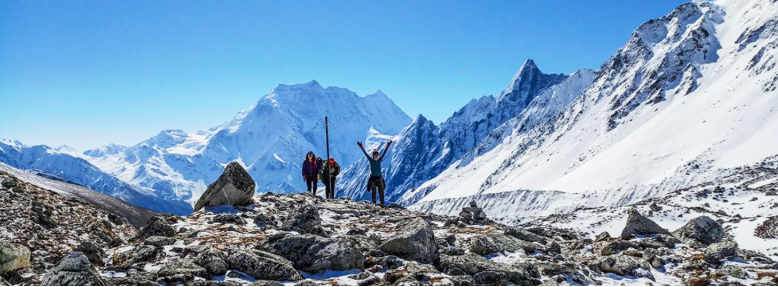The Manaslu Circuit Trek is an extraordinary Himalayan journey that offers an alternative to Nepal’s more commercial trekking trails. Positioned in the Gorkha district of north-central Nepal, this trek circles Mount Manaslu, the world’s eighth-highest peak at 8,163 meters. Combining remote wilderness, dramatic landscapes, and centuries-old Tibetan Buddhist culture, the Manaslu Circuit remains one of Nepal’s most authentic and less-traveled routes.
Despite its growing reputation among experienced trekkers, the Manaslu region still retains its quiet charm. The trail offers a balanced blend of natural beauty, challenging high-altitude trekking, and deeply rooted local traditions.
Geographical and Cultural Richness
The Manaslu Circuit route stretches through the Manaslu Conservation Area, a protected zone encompassing subtropical forests, alpine meadows, and towering Himalayan peaks. The journey typically begins in the village of Soti Khola and ascends steadily through several ecological zones, eventually reaching the Larkya La Pass, which stands at 5,160 meters.
The trail is home to diverse ethnic communities. In the lower sections, trekkers encounter the Gurung and Magar people, while the upper areas are predominantly inhabited by Tibetan-origin communities such as the Nubri and Tsum people. These communities follow Tibetan Buddhism, evident in the architecture, religious monuments, and daily practices observed throughout the region.
Trekking Itinerary and Route Overview
The full circuit typically takes 14 to 17 days, depending on acclimatization needs and personal pace. The trek can be completed in either clockwise or counter-clockwise direction, but most itineraries begin from Soti Khola and conclude at Dharapani, connecting with the Annapurna Circuit trail.
A general itinerary looks like this:
- Day 1–2: Drive to Soti Khola and begin the trek toward Machha Khola
- Day 3–5: Trek through Jagat, Deng, and Namrung—witnessing the transition from subtropical vegetation to alpine terrain
- Day 6–8: Reach higher villages like Lho, Samagaon, and Samdo; spend time acclimatizing
- Day 9–10: Cross the Larkya La Pass, the highest point of the trek
- Day 11–13: Descend through Bimthang, Tilije, and finish at Dharapani
- Day 14: Drive back to Kathmandu or Pokhara
The trail is rugged in parts, with narrow ridges and stone staircases, but is maintained well enough for fit trekkers with moderate to high trekking experience.
Highlights Along the Trail
One of the most memorable parts of the Manaslu Circuit is the feeling of remoteness. Unlike the crowded routes to Everest Base Camp or Ghorepani, this circuit provides a serene atmosphere and unspoiled surroundings.
Key highlights include:
- Lho Village: A picturesque village with panoramic views of Manaslu and a beautiful monastery perched on a hillside.
- Samagaon: A cultural and scenic gem where trekkers usually take a rest day; side trips include Pungyen Gompa and Birendra Lake.
- Larkya La Pass: Crossing this high-altitude pass is both physically demanding and visually stunning, offering a 360-degree view of Himalayan peaks like Cheo Himal, Kang Guru, and Himlung.
- Bimthang: A lush, peaceful valley that feels like a reward after the tough crossing of the pass.
When to Go
The best periods for the Manaslu Circuit Trek are:
- Spring (March to May): Pleasant temperatures, blooming rhododendrons, and clearer mountain views.
- Autumn (September to November): Dry weather and stable conditions with excellent visibility.
Winter brings snow and freezing temperatures that can block the Larkya La Pass, while monsoon season (June to August) makes the trail slippery and prone to landslides.
Permit Requirements and Regulations
Because the Manaslu region is designated as a restricted area, special permits are necessary to enter. Solo trekking is not permitted.
You will need the following:
- Manaslu Restricted Area Permit (RAP) – Cost varies by season.
- Manaslu Conservation Area Permit (MCAP)
- Annapurna Conservation Area Permit (ACAP) – Required for the exit route via Dharapani.
- Licensed guide – Mandatory by law
- Minimum group size – Two trekkers (although solo travelers can join a group through agencies)
All permits must be obtained via a registered Nepali trekking agency.
Accommodation and Meals
Accommodation throughout the trek consists of teahouses—locally run lodges that offer basic rooms with shared toilets. Blankets are usually provided, but it’s advisable to carry a high-quality sleeping bag.
Meals are simple but filling. Typical dishes include:
- Dal Bhat (rice with lentils and vegetables)
- Tibetan bread
- Fried noodles or pasta
- Eggs, soup, porridge, and tea
Food prices increase with altitude, reflecting the cost of transporting goods by mule or porter.
Health and Safety Considerations
As the trek reaches significant altitudes, acclimatization is critical. Symptoms of Acute Mountain Sickness (AMS)—headache, nausea, dizziness—should not be ignored. Take rest days at higher elevations, especially in Samagaon or Samdo, and stay hydrated.
Carry a first aid kit, water purification method, and any necessary prescription medications. Travel insurance that covers high-altitude trekking and emergency evacuation is essential.
Environmental and Cultural Respect
The Manaslu region is both environmentally sensitive and culturally significant. Trekkers should adhere to Leave No Trace principles, avoid single-use plastics, and show respect when visiting monasteries or interacting with locals.
Ask for permission before taking photographs of people or religious sites, and follow local customs such as walking clockwise around shrines and not stepping over mani walls.
Conclusion
The Manaslu Circuit Trek is a spectacular trekking route that showcases the majestic beauty of the Himalayas and the resilience of the mountain communities that live in its shadows. Offering isolation, authenticity, and dramatic scenery, this trek is ideal for those who want a rewarding and immersive experience away from the more developed trekking zones.
With the right preparation and respectful approach, the Manaslu Circuit promises not just a trek, but a journey into a different world—one where mountains, culture, and adventure converge.
